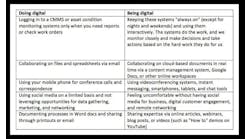Smart water management at the municipal level
By Max Silber, VP of mobility with MetTel
The enormous promise of IoT to be a force for good is exactly why so many city governments—who are not the type of organization you’d typically think of as “early adopters”—are launching plans to become sustainable smart cities. From a municipal-management
perspective, waste and water management are low-hanging fruit for IoT to make a major impact.
Take the City of Phoenix, Arizona, which is challenged with managing and conserving 270 million gallons of tap water and treating 135 million gallons of wastewater daily. Water is the lifeblood of the city, especially considering the dwindling resources around the Colorado River in the drying U.S. west. Ultimately, the city wants to reach a zero-waste goal by 2050.
Phoenix is tackling this challenge by using IoT to gather data on its vehicle fleets. Using automated vehicle-location services, the city can now account for its water and waste transportation assets in order to dispatch the nearest driver to emergency sites. Not only does this mean city resources are being used as efficiently as possible, but also that the city can be more effective in serving citizens.
Just think about it—now Phoenix can identify drivers who are wasting fuel by going off route. Using telemetric devices, they can also measure and work to improve on each employee’s driving behavior across metrics like idling, braking and turning. They can even identify when a driver is getting drowsy to give that person a break or help them remain alert.
Phoenix also can remotely monitor and manage water mains. If there’s a leak in one of the city’s 150,000 water mains, they will not only spot it, but can turn that water main off remotely. Similarly, South Bend, Indiana, has placed sensors throughout its sewer system to monitor water levels to guard against flooding of wastewater.
Too effective to be ignored
While there are startup costs involved in IoT outfitting on a municipal scale, savings add up quickly. Moreover, municipalities can typically wade into “smart” programs with incremental projects.
The first step is to get inspired by learning how others are leveraging smart technology. Then, city planners must engage with IoT-enablement partners to develop a strategy.
Getting on board with IoT is more than just “smart”—it has the potential to dramatically improve everything you care about, from your budget to the safety of your employees and, over time, even the planet you call home.

